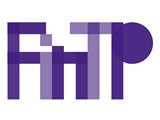
Last week, together with Raiffeisen Bank Romania, Allevo contributed with a case study about corporate SEPA compliance to the Digital Banking conference held by Oxygen Events at Crowne Plaza Bucharest.
Besides being a great networking opportunity with our partners and clients, the event also featured captivating debates and surfaced useful insights that would help trace a path for the coming years in terms of digital banking expectations and demands.
Event Agenda Overview
| Theme |
The New Banking Era Impact & Trends |
| Moderated by: |
Rodica Tuchila (ARB – Romanian Banking Association)
Eduard Bisceanu (Unicredit Romania) |
Panel 1 focused on Instant Payments and PSD2, with handy information from TransFonD, BNR – National Bank of Romania and Libra Internet Bank;
Panel 2 was mainly dedicated to Cybersecurity, Counter intelligence and Blockchain, with main contributions from the CISO of CEC Bank, ANSSI – National Association for Information Systems Security, CERT-RO, IceU Training Group and Nova IT Solutions.
In between, there was a special insert with Allevo’s presentation on SEPA compliance for corporates, introduced by a Roland Berger study on European FinTechs.
| Case Study speakers: |
Laura Cristea (Business Analyst @ Raiffeisen Bank Romania)
Sorina Bera (CEO @ Allevo) |
The discussion was focused on the recent announcement of Raiffeisen Bank Romania adopting Allevo’s open source solution for SEPA compliance for their corporate customers.
Instant Payments & PSD2
Here are a few highlights on these topics, fresh from the Digital Banking event:
- There is a great interest in Europe for Instant Payments and the financial market infrastructures are focusing on implementing such processing systems.
- PSD2 will most likely be transposed in the Romanian Law, unfortunately, quite close to the deadline, which is 13 January 2018.
- There is a need for unifying APIs, as TPPs (Third Party Providers) will have a hard time implementing a multitude of formats.
- If banks have to open up to TPPs, they also have to open up to other banks.
The latest revisions of EU Regulation 260/2012 have a direct impact on a bank’s corporate clients, and this was clearly a challenge for Allevo, in the sense of designing an application that would easily accommodate this requirement and a certain number of customers.
Besides being the first time that a European Regulation affected customers of banks, it also changed Allevo’s business model, who had to distribute a software solution without having a direct relationship with the end user.
One of the particularities of Allevo’s solution is that it is not installed in the IT architecture of the bank, but in that of the corporation.
Allevo created an easy-to-use application that would help corporate customers comply, converting existing formats to the required ISO 20022 pain 001 format. The fact that it is distributed under an open source license allows distribution to several business customers of a bank.
Final considerations
After a fruitful debate on compliance, there was a part dedicated to virtual currency, with a particular focus on blockchain, followed by a quick session on counter intelligence. This was backed up by a behaviour analyst and an IT security expert from IceU Training Group, who managed to send a few shivers down our spines.
The conference came to an end with a fun raffle, where Allevo offered the two big prizes, and participants were validated by Fujitsu’s PalmSecure, previously used in order to register at the event.
Regulatory technology, in short RegTech, emerged from the increasing levels of regulation and challenging expectations that impact financial institutions all over the world.
Something Old, Something New
Under the sign of constant improvement, the European Union adopted a new directive on payment services in 2015, to become applicable starting January 13, 2018.
The first directive (in force since 2009) covers all types of electronic and non-cash payments, such as credit transfers, direct debits, card payments, mobile and online payments, and its purpose was to establish the same set of rules on payments across the entire EEA (EU + Iceland, Liechtenstein and Norway), helping consumers make easy and safe cross-border payments.
 According to this directive (PSD1), payment service providers (PSPs) must give suitable information to consumers, ensure fast and efficient service, and must compensate the consumer in case the services are not provided correctly.
According to this directive (PSD1), payment service providers (PSPs) must give suitable information to consumers, ensure fast and efficient service, and must compensate the consumer in case the services are not provided correctly.
The added value that PSD2 brings to the table is taking into account new digital payment services, including provisions to make internet payments easier and safer, better protecting consumers against fraud and payment problems, and strengthening their rights as well as the role of the European Banking Authority (EBA).
Along with this new directive comes a regulation on multilateral interchange fees, and their combined purpose is to limit the fees for transactions based on consumer debit and credit cards, banning retailers from imposing surcharges on customers for using these types of cards.
Aside from increasing competition in the payments industry, what PSD2 aims for is to keep up with the rapid changes in the field, due to market development, evolving customer needs and more advanced technological capabilities.
The Greatest Impact of PSD2 – Introducing TPPs
Undressing this new directive layer by layer, the major change is revealed in terms of competition: the introduction of so-called Third Party Providers (TPPs), who may provide certain types of payment-related services, and whom financial institutions will have to open their account interfaces to. This is, in fact, meant to slice the economic cake that banks indulge on, and give away a piece to new entry players.
 These new TPPs will fall under one of these two types of licenses: Payment Initiation Service Providers (PISPs) and Account Information Service Providers (AISPs), both more restrictive in terms of service types than for regular payment institutions, but definitely detrimental to the latter, since banks are to make automatic payment orders possible without actually benefitting from the transactions.
These new TPPs will fall under one of these two types of licenses: Payment Initiation Service Providers (PISPs) and Account Information Service Providers (AISPs), both more restrictive in terms of service types than for regular payment institutions, but definitely detrimental to the latter, since banks are to make automatic payment orders possible without actually benefitting from the transactions.
Apart from the declared role of the intermediaries in payment transactions, that is to ensure transparency and non-discriminatory, open environments, let’s take a look at the real pros and cons implied by PSD2 for all parties involved:
A. Only Pros -> Merchants
- Reduced costs
- Immediate settlement
- Improved direct relationship with the customers
B. Mostly Pros -> Consumers
- Ability to have all accounts (secured) in one place
- Choice of most convenient interface for checking bank account details
- Practical & convenient direct integration of bank account with merchant sites
Flag: Not clear who is responsible in the event of loss: the PISP (merchant), or the ASPSP (bank)
C. Mostly Cons -> Banks
- Significant costs for implementing changes
- Tight implementation deadline
- Weaker relationship with the consumer
At least, they may position themselves as an AISP…
Either way, the one big benefit of PSD2 is that it forces a partnership between various payment service providers and established financial institutions and this comes in a time when these parties are trying to compete with one another, rather than trying to work together to offer better services to people.
Why switch to FinTP
It’s a known fact that the current financial transaction processing market has rich, highly benchmarked applications, distributed under proprietary software-licensing frames. However, this implies high investments, not only because of the premium price attached to them, but also in terms of maintenance and necessary upgrades, not to mention the untimely fashion in which regulatory compliance is achieved. Last, but not least, all proprietary solutions create a strong dependence on the vendor that supplies them. And this can be tricky when changes need to be implemented.
 This is where Allevo’s FinTP solution fits into the picture, as a highly reliable, secure and resilient OSS product with proper support, which will empower SMEs to perform their businesses in compliance with evolving industry regulations and standards, while lowering the total cost of ownership (TCO) by up to 90%.
This is where Allevo’s FinTP solution fits into the picture, as a highly reliable, secure and resilient OSS product with proper support, which will empower SMEs to perform their businesses in compliance with evolving industry regulations and standards, while lowering the total cost of ownership (TCO) by up to 90%.
This open source product is highly flexible, affordable, secure and fast to implement for processing financial transactions in a fast changing world. Its key factors are interoperability and standardization, which enable a unified flow of transactions, necessary both to accommodate newcomers and to help existing companies to strive.
Allevo’s guaranteed distribution (in terms of reliability, security and maintenance) shifts the revenue streams from license sales to services offered to its customers through a subscription based model, which is both transparent and business friendly.
We, at Allevo, strongly believe that the future belongs to those who challenge expectations and harvest trust and respect from every market and every customer, so we clearly stand by EU’s intention to encourage competition and increase customer protection, offering our partners all the support they need in this transition.
Bear in mind that we are deeply aware of the uniqueness of every bank and financial corporation, and our specialized skills are a sum of customized solutions for different and specific needs.
EU 260/2012 Regulation affects not only banks, but corporates as well
According to the European Payments Council, instant payments are the next step in the harmonization of SEPA payments and they will be the main focus in the following years.
Defining the Context: Overview
It is widely accepted that real-time payments are necessary in terms of supporting Europe’s economic growth, especially since its digitalization leads to new expectations from consumers and retailers alike. As e-commerce exhibits a regular and continual growth in Europe, customers expect to receive purchases as fast as possible, bypassing holidays and weekends, whereas suppliers want to have the certainty they are paid sooner for what they provide, instead of waiting up to one or more business days for payments to be settled and confirmed.
Instant payments are thus a win-win solution, being processed in a matter of seconds – less than 10, to be more specific, and they may be seen as a natural extension to nowadays’ instant communication and latest technology developments.

The waiting time in most of today’s electronic payments is caused by daily batch processing, clearing and settlement and correspondent banking architectures. Ideally, they are processed on a transaction-by-transaction basis, as soon as the payment reaches a PSP system. But in current environments, this would come at a very high cost. A better solution for instant payments is thus needed, making them a near-substitute for cash, as the transfer would be immediate and available around the clock, irrespective of the underlying payment instrument used. Becoming a viable alternative to the widely used cash, real-time payments may furthermore reduce managing costs at the level of the entire economy.
The need for creating a pan-European instant payments solution emerged from the intention of several European countries to launch their own solutions, which wouldn’t have been interoperable, hence prejudicial to the e-payments harmonization across Europe.
The solution proposed by the EPC is currently transposed in the SEPA Instant Credit Transfer (SCT Inst) scheme, with a first version of the rulebook being published in November 2016, based on the 2009 version of ISO 20022. It is to be enforced on November 21st 2017 (effective until November 2019), and the next scheme change management cycle will take place in 2018.
This optional SCT Inst scheme is designed for euro transactions (up to 15,000 EUR per instruction), available 24/7/365, whether the payment accounts (for sending or receiving) held at the PSPs operating within SEPA are denominated in euro or another currency.
Obvious benefits for all parties involved
As expected, consumers, businesses, governments, and payment service providers alike are to benefit from instant payments.
As far as consumers are concerned, they’ll be able to make and receive payments with immediate transfer of funds (especially useful in case of emergency payments), optimizing cash usage in a flexible and convenient way. Besides enabling immediate person-2-person mobile payments, this scheme also facilitates future cutting-edge payment products via smart devices.
Businesses should benefit from the increased efficiency of e-invoicing, improved cash flow and optimized working capital management, to name a few. The instant transfer of funds would reduce late payments, improving both e-commerce and check-out processes at physical points-of-sale. On the same level, governments would be able to integrate tax, social insurance and other related payments, thus increasing efficiency.
PSPs are motivated to offer instant payments by being provided with a competitive advantage on the market and strengthening the relationship with their current customers. They could also use the instant payment infrastructure as a building block to develop other real-time financial services and products, thus attracting new clients.
Key characteristics and challenges
| PROs |
CONs |
| Instant credit (within 10 seconds) |
Fraud risks
Cost of implementation |
| Irreversibility (initiated payments cannot be canceled by the payer) |
| Certainty (immediate confirmation of payment success) |
The ability to make SEPA payments anytime, any day and within a few seconds comes with a real challenge in terms of fraud detection, as there should be no room for error. Real-time payments raise flags when coming across failures and this obviously has a huge negative impact on a bank’s reputation, as bad news in the digital age travels faster than ever.
Real-time capabilities must be thoroughly evaluated throughout the entire payments processing chain, from accepting and authenticating a transaction to processing and back-end systems, making real-time fraud checks and sanctions the main focus of this service. Furthermore, KYC and AML regulations will definitely play a vital role in an instant payments type of configuration.
The 24/7 society we live in is not just about making things faster, but also keeping everyone compliant and safe, and this is where experienced FinTech players, like Allevo, will have a key role in implementing applicable standards and best practice methods for aligning financial services to current regulatory requirements.
In fact, as soon as banks decide to provide this service, Allevo’s open technology will be ready to accommodate the necessary changes, given that real-time resilience at transactions level is already an operational feature in FinTP.
These being said, dear banks, the ball is in your court. Just let us know where to draw the line.
Allevo created an open source application that processes transactions achieves conversion from proprietary or existing formats to the ISO 20022 pain 001 format. The GPL v3 distribution model allows banks to offer this white label solution to their corporate customers, without any dependence on the vendor who initially created it, Allevo.
Raiffeisen Bank Romania has successfully implemented Allevo’s open source solution for corporate SEPA compliance. EU 260/2012 Regulation affects not only banks, but corporates as well.











 According to this directive (PSD1), payment service providers (PSPs) must give suitable information to consumers, ensure fast and efficient service, and must compensate the consumer in case the services are not provided correctly.
According to this directive (PSD1), payment service providers (PSPs) must give suitable information to consumers, ensure fast and efficient service, and must compensate the consumer in case the services are not provided correctly. These new TPPs will fall under one of these two types of licenses: Payment Initiation Service Providers (PISPs) and Account Information Service Providers (AISPs), both more restrictive in terms of service types than for regular payment institutions, but definitely detrimental to the latter, since banks are to make automatic payment orders possible without actually benefitting from the transactions.
These new TPPs will fall under one of these two types of licenses: Payment Initiation Service Providers (PISPs) and Account Information Service Providers (AISPs), both more restrictive in terms of service types than for regular payment institutions, but definitely detrimental to the latter, since banks are to make automatic payment orders possible without actually benefitting from the transactions. This is where
This is where 